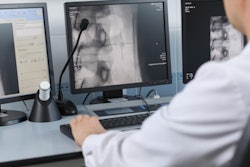
The ability of teleradiology to provide specialized radiological care to sparsely populated areas at any time of day shows just how critically important the technology can be in improving patient care.
In the U.S., teleradiology networks are usually limited to within a particular hospital system, but in countries with national health systems, they can be used to create nationwide networks. The success of a national teleradiology network in Germany shows how competently radiologists can be linked to care providers, even when they are separated by geography.
But getting a teleradiology network to run efficiently and optimize care took a lot of persistent hard work, interpersonal collaboration, and innovation. Developers of the network had to put a good amount of personal time and effort into convincing other institutions of the benefits of joining the network. This often required a personal effort by the teleradiology staff, endurance, and flexibility from local and external team members.
Radiologist shortage
Berlin, the capital and largest city in Germany, is one of the country's 16 constituent states. Berlin is surrounded by the state of Brandenburg, which is more rural and less populated.
In the early 2000s, the administration of the BG Klinikum Unfallkrankenhaus Berlin (UKB -- Berlin Trauma Hospital) and its department of radiology and neuroradiology initiated efforts to provide medical care beyond state borders into Brandenburg and to make the hospital a central partner for patient transfers.
 Dr. Leonie Goelz.
Dr. Leonie Goelz."We were driven by how, in many rural parts of Germany, there is a shortage of physicians, especially radiologists," explained Dr. Leonie Goelz of the department of radiology and neuroradiology at UKB in an interview. Goelz was lead author of a report published December 9, 2021, in Healthcare on the challenges and solutions driving the network's development.
The department wrote the report to outline the key issues and obstacles its staff faced in establishing the network, the personal efforts needed to overcome these challenges, the successes achieved, and the challenges that remain.
In 2004, after receiving inquiries about getting radiology care from their hospital, the network made its first connection with Sana Hospital Templin. Over the years, some sites joined and some left the network, according to Goelz.
As of 2020, 25 sites were in the network, including 23 small- to medium-sized hospitals in three neighboring states -- Brandenburg, Saxony, and Saxony-Anhalt. The facilities had differing depths of technical integration and coverage. An accident insurance consultancy and a mobile stroke unit with CT were also part of the network.
"The system started out basically with sending and receiving requests by fax for an image study, and now the system is deeply integrated in many of the hospitals," Goelz said.
Integration involved adapting technological communication standards, such as DICOM or Health Level 7 (HL7) standards, and integrating teleradiology sites into radiology systems, according to Goelz.
Improving department efficiency
Refining the teleradiology network enabled the Berlin Trauma Hospital's radiology department to generally improve its efficiency.
"The processes and workflow were optimized, which speeds examinations and report writing. This reduced the number of radiologists needed for examinations, giving them more time to perform other tasks or expand their workloads. It can be very time consuming if the integration is bad, and the workflow is interrupted," Goelz added.
As an example of a gain in efficiency, Goelz said that the experience gained over the years of operating the network helps the team better evaluate software before incorporating it into their network.
"Finding weak spots in software is much easier after we've gained experience with the system," she added.
Unexpected benefits
There were some unexpected benefits as well. Connecting institutions through teleradiology also promotes communication and cooperation between clinicians at different sites and offers the potential for increasing patient transfers to the providers' sites.
 Jens Hausmann.
Jens Hausmann."We have gained a lot of experience over the years, especially from a technical point of view," explained Jens Hausmann, a radiographer/radiologic technologist at Berlin Trauma Hospital. Other advantages include close cooperation, patient referrals, shortened communication channels, and high-quality medical care, he added in a statement.
Patient care has improved simply by having a network that can provide imaging services all day, seven days a week. And, through the network, local hospitals have access to radiologists who have experience with complex cases, such as complex trauma cases.
Moreover, establishing network connections with other hospitals wasn't just about teleradiology, noted Goelz.
"The network also meant providing good medical care to these hospitals and improving our (business) connection with the hospitals. This opens up the possibility of patient exchange with these hospitals if they need tertiary care for some pathology, trauma, or disease that we can treat. Then they would transfer the patient to us," Goelz explained.
Obstacles
But there were several obstacles during network implementation and expansion, including the following:
- The initial cost of equipment
- Changed workflow requirements
- The variability of technical capabilities at individual sites
- Underdeveloped radiology information system (RIS) and PACS architectures at some sites
- Little integration at some sites
- Inexperienced management and authorities
Correcting some of these issues involved allocating computed radiography systems to some sites, upgrading transmission streams, the stepwise transmission of images, improving the learning curve of staff at the main site, continuous personal dialogue, establishing close cooperation between radiology departments and local IT specialists and radiologists, and making additional investments in equipment at participating hospitals.
"It's primarily a question of how much money they can invest into being connected to our network because the depth of integration depends on it," Goelz added.
The team from the Berlin Trauma Hospital also had to convince the other hospitals to handle their workflow differently. Obstacles to unifying workflows had to be overcome to handle the cases efficiently. Various obstacles included a lack of HL7 integration at some sites, working with local independent radiologists who were not familiar with the workflows; and addressing the physical distance between technicians and clinicians.
Additional challenges included keeping track of and prioritizing examinations at all sites. This is one area that might be improved using artificial intelligence (AI), said Goelz.
"Also, we are working with an AI-based stroke solution which detects large vessel inclusions and intracranial hemorrhages, and with an algorithm that detects incidental pulmonary embolisms," she said.
In addition, she said there are still some smaller hospitals that did not fully integrate their system into the main hospital's system, so they only have a very basic connection. There may be issues with transferring information from the clinician into the final radiology report.
In 2013, the Berlin hospital optimized its RIS to integrate different external workflows into its hospital workflow. For example, the staff used a dedicated export server to build an order message out of DICOM tags to extract patient data automatically and avoid manual bookings by the staff, according to Hausmann.
Several obstacles remain unsolved.
"Analog requests (by fax) from institutions with low examination frequencies in the network are a problem. There is no sensible solution at this moment. They still have to be transferred manually," Hausmann said.
In addition, the scientists note that spiral CT, which generates more than 1,000 thin slices during a whole-body scan, still poses challenges for some data connections. And ultimately, investments in national infrastructure in Germany are key to the continued functionality of high-quality image transmission.
Getting management buy-in
Continuous personal contact and dialogue were important in the network's successful negotiations with management at the different connecting institutions. Negotiations were sometimes tricky, requiring some persuasion.
Videoconferencing, personal visits to different hospital sites, continuous training of the local staff, and designating a contact person for the local staff helped ease the transition into the network and harmonize workflows, according to Goelz and Hausmann.
One of the bigger issues involved trying to convince hospital management at the different sites of the need for establishing a teleradiology network because they were unfamiliar with the technology, Goelz explained.
"But there was a real need, and we had to find a solution. It became easier over time as our reputation grew, and we could present them with our experiences with the first institutions that we incorporated," she said.
Hausmann added, "Costs are an important factor when thinking about engaging in teleradiology. The investments dictate the technical setup, more specifically the depth of integration of a new institution into the network, and the software which can be used. Because we wanted to conserve the efficient workflows of our own institution, we decided on the depth of integration of a new institution based on the number of studies that should be processed by our radiologists.
"For instance, if the number of studies per day is rather high, we needed a deep integration into our system (by the outside site), which was often connected to higher costs during the setup," he said.
Despite a reduction in staff at the hospital for safety concerns, Goelz and Hausmann indicated that the COVID-19 pandemic had little effect on the network and its ability to process imaging studies. Caseloads declined, as people were less prone to leave their homes for imaging studies.
The teleradiology network enabled radiologists to work from home, even though some of them did not have optimum connections. Some radiologists worked at the hospital in order to keep close contact with clinicians, Goelz noted. Videoconferencing facilitated some communications.
Goelz said that the teleradiology network has helped radiologists foster a very good relationship with most referring physicians.
"Our very good and trustworthy relationship is probably due to how in the beginning (of the network) there was a lot of personal exchange. One of our colleagues, Christian Madeja, would drive around the country in the beginning to talk to the referring physicians and technicians and see what was important to them. And we continue to get feedback from and work with the other hospitals, which is very important to our network's success."
Different networks face different challenges
Goelz indicated it might be challenging to set up a teleradiology network in other countries, such as the U.S., which is much larger than Germany and in which healthcare is more fragmented. Also, cross-border radiology is a challenge even in the European Union (EU). In addition to common EU laws and regulations, individual countries have their own laws that must be followed.
In terms of lessons learned, Hausmann emphasized how technical infrastructure is an extremely important issue which should be evaluated before investing in a teleradiology network.
"In Germany, there are two kinds of teleradiology architectures, the pull- and push-models. In my opinion, interested parties have to check which works best with the local infrastructure: direct image export and storage in the PACS (push), or using an interim medium (mail or web server) to store images from which they can be extracted on demand (pull)," he said. "The optimal way to exchange information has to be identified."



















